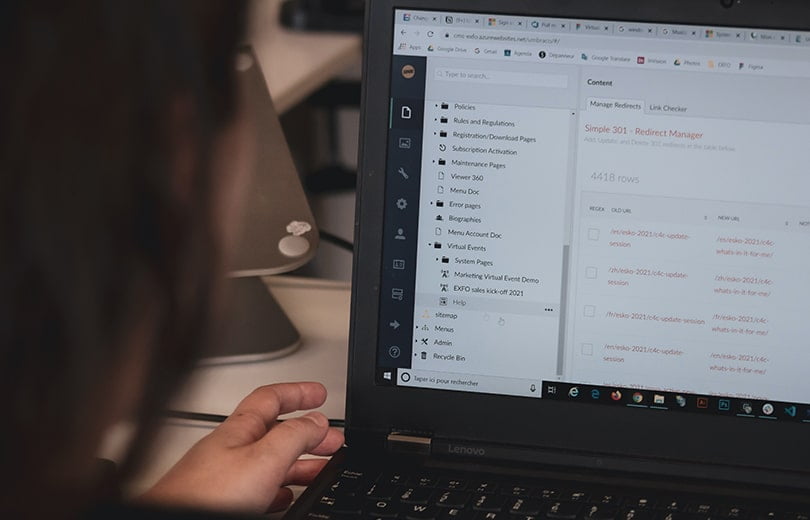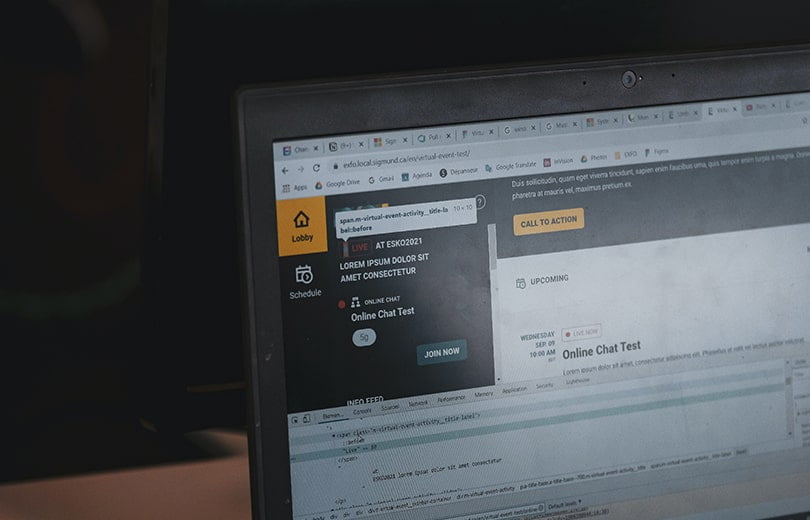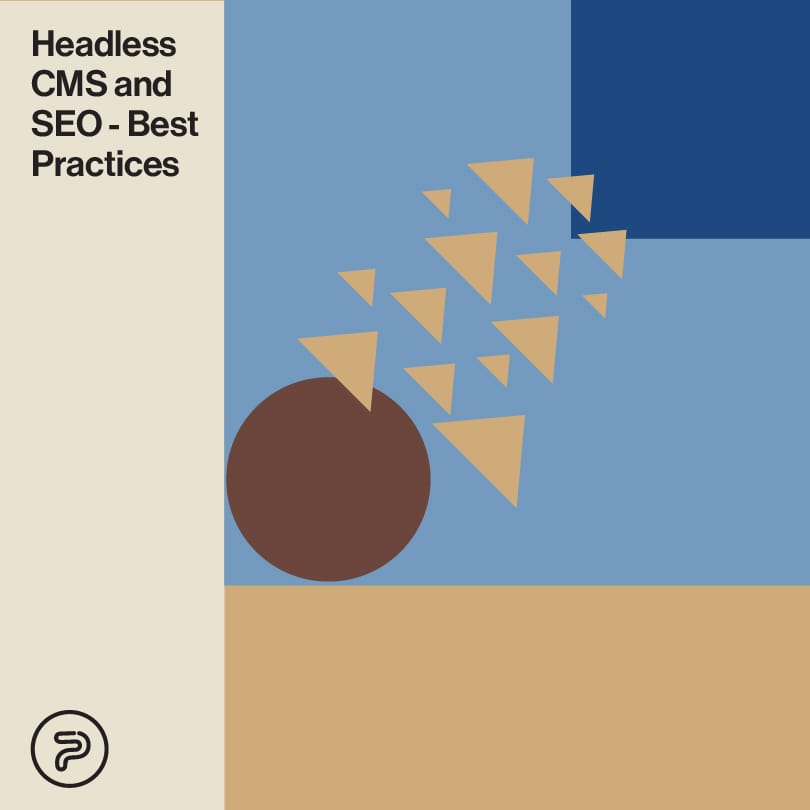If you’ve ever used a Headless Content Management System, you know that from the editorial side, one of the biggest differences between a traditional CMS and Headless is the ability to edit metadata better on the fly, along with tweaking content based on the device being used, having better control over structured data (and working with it), and are better at building user-defined experiences.
On the other hand, traditional systems are usually closely integrated with domains and have better control over how your content is rendered. With platforms like Drupal or WordPress, you can easily add and edit page titles, descriptions, or create tags with ease.
With a headless solution like GrapCMS for example, the system has less control over the way the content is rendered (because of cross-platform flexibility) and that is why this functionality has to be approached differently.
In this blog post, we will talk about the necessary measures and best practices you need to implement in order to get out the most of such a system in terms of search engine optimization solutions.
Traditional Systems VS Headless
When it comes to a traditional CMS, the users pretty much have to relay several plugin combinations to deal with structured content, taxonomies, security, content optimization, metadata, just to name a few. In the case of Headless systems, users are left to configure all these factors in a highly unique way that works the best for them with ultimate control over what goes where.
On that end, the most common practices for optimization (both on- and off-page) rarely change. You would still need proper keyword choice and placement, high-quality content, domain authority, interlinked content pieces, backlinks from reliable sources, and social sharing to optimize the proper way.
You might remember the old days, where SRP placement was heavily influenced by keyword density and volume. This ultimately resulted in poor overall content quality and the creation of countless web pages that were catering more to robots than humans.
Luckily, those days are over and algorithms have evolved to a place where content creators need to produce way better quality, cut out the robot-focused gibberish, and focus on human-oriented quality content.
At first glance, traditional systems (think Drupal and WordPress) made it easier for marketers to optimize their efforts and content, using add-ons and plugins. But with technological advancements, and more emphasis on cross-platform experiences, Voice Search, AI, and others, traditional systems started to show their limits and flaws.
With the emergence of home voice assistants like Siri, Alexa, and Google Home, VR devices, and smart wearables, the way we interact with the digital world has changed and there’s a more pronounced need for new solutions that can no longer rely on a traditional CMS to push content to the myriad of different devices we use today.
However, interesting enough, the basic SEO principles somewhat managed to carry over these new devices mentioned above, even if, with them, we’re not really looking for search results anymore. The truth is, the structure of a web page selling lawn mowers can have its pages qualified for Alexa or Siri answers. The same goes for news apps for wearables with a Headless CMS.
All these extraordinary changes have made the Headless CMS an increasingly important website platform when it comes to SEO.
Best Technical SEO Practices for Headless CMS Systems
In the big scheme of all things digital marketing, SEO usually has a bad reputation for being way too complicated, time-consuming, requiring experts to constantly adapt to the changing Google algorithms. Without a doubt, good SEO is a great (and pretty much necessary) digital investment, it won’t give out tangible results as let’s say other marketing tactics. Even then, smart SEO investments are the strongest foundation of a great online presence, And even before you start creating content, you must focus on the basic technical factors for SEO:
- Website performance
- Great content creators
- Understandable page structure and ease-of-crawlability
In essence, using a Headless CMS won’t change these basic SEO priorities, although getting them right might even be simpler a bit.
There are several benefits that come from migrating a traditional CMS to a headless system, especially from the perspective of page performance, user experience, security, and delivering content to several platforms.
But since Headless systems won’t necessarily give site owners the plug-and-play simplicity of installing the right add-ons and plugins to manage SEO-related factors, you will need to follow a few best practices to get your optimization going.
In essence, here are some key points that we will discuss in a minute:
- Using concise and accurate meta tags
- Regular page audits
- Being website performance-oriented
- Use SSL
- Use CDN
- Optimizing media files and assets
- Considering using SSG
- Using structured data markup schema

The Benefits of Headless Systems for SEO and Managing/Distributing Content
In essence, a Headless CMS disconnects the front-end head from the content repository as a back-end body. Such a system comes with no traditional “front-end” out of the box, which means that the website owner has total control over how, when, where, and shy the content is dictated across platforms without limitations often associated with plugins, templates, themes, and tech frameworks.
Essentially the system enables content creators to forge and deliver content to any device in any given format. Anything from VR devices, to everything smart (watches, car systems, heck even fridges).
Also, these features ensure that headless systems can integrate and easily connect with every MarTech stack, enabling easy automation CDP, analytics, CRM, A/B testing, performance marketing, and personalization.
Headless systems save time because the content needs to be created only and can be deployed and customized across all platforms natively. without the front-end and the limiting features of traditional CMS systems and performance, Headless CMS can improve performance metrics for SEO in every aspect.
Best Practices for SEO with Headless Systems
Here we go. Finally.
Focusing on Loading Speed and Page Performance
To tackle the issues of loading speed, and overall performance, there are a few necessary precautions to take with Headless systems.
Adding a component for metadata, for instance, is crucial. However, you should also know that a JavaScript-powered web application with dynamical client-side rendering may not be indexed and crawled at all.
Those components that aren’t read properly will be assumed as empty.
To manage your metadata efficiently, (let’s say, of a Reach web app), you need a component like React router that will make the URL structure more friendly as it will create paths between different pages.
IF JS is disabled on the client-side, you can also take a closer look at isomorphic JS technology that runs JavaScript on the server-side before serving it. Also, you can use tools like Prerender. This will pre-render the website and will give the content in full HTML.
Using Schema.org structured data markup Schema to Improve Crawlability
Schema.org offers devs a set of pre-defined properties to enrich and maximize the potential of their HTML tags. For instance, the on-page markup adds structure to the content and ensures that search engines will have an easier time understanding it. As such, better search results can be delivered.
Helping search engines understand the meaning of the content and structuring the page also improves indexing.
Knowledge Graph for SEO
Depending on your particular user case, structured data might be useful to Google’s Knowledge Graph to give your readers better results, upfront info, and better relevant links.
Common info that’s part of the Knowledge Graph includes such common factors as reviews, contact info, directions, operating hours, source links, and so on.
The info in the Knowledge Graph is often used to answer direct spoken questions in Google Home Smart Devices.
Using a CDN
Using a CDN allows for faster media delivery on websites. It’s faster than using single or multiple server solutions because it uses global content distribution on servers. A CDN allows faster content delivery, improves load times on servers, improves latency, and makes your content more available without damaging security.
Keyword Research
By now, you definitely know that one of the most important precursors to optimized pages is satisfying relevant content needs. No matter how you approach an SEO campaign, you will have to know the search terms your visitors are using to look for services and products.
Using important resources like Google Search Console and Google Keyword Planner (and a wide range of different tools) can help you identify the necessary short-tail and long-tail keywords to get started.
Building your content around the most essential keywords can drastically reduce bounce rates and improve reader relevance.
Using HTTPS
Upgrade to HTTPS to ensure that you satisfy the growing concerns of users regarding security. With Google marking every HTTP website as insecure, you need that added layer of safety and encryption to improve security and to up your chances in the eyes of the latest search engine trends.
On the other hand, HTTPS sites load faster and page speed has also become a pivotal factor in ranking.
Use SERP-friendly URLs
To improve your headless CMS and SEO, you need to ensure that your pages all follow a clear URL structure.
A fine example of that would be: example.com/about-this-page.
These URLs are designed to match the things that people are trying to find with better transparency and relevance. This means the users will pretty much know what to expect from your page when they look at the URL. Good URLs should be shorter and keyword-rich.
Perform Regular Website Audits
Use tools like Lighthouse for auditing your pages. These tools run a few tests on your pages and generate reports with a general score and give your recommendations focusing on the areas that might need improvement.
There are usually several categories that are tested, like accessibility, performance, and so on.
In recent years, the rising popularity of static site generators (think Hugo and Gatsby) also made compelling arguments for going fully Headless for new projects. For instance, Gatsby’s starter usually receives high scores when compared to basic traditional CMS themes, giving new projects a clear edge in terms of optimization and performance.
Optimizing Metadata for Search Engines
When it comes to page content, meta tags are among the most essential descriptors. They aren’t visible to users, but they are to search engines, helping them determine what the content is about.
As such, here are the four key meta tags that you need to focus on:
- Title Tag (70 characters max)
- Meta Description – a short content description (no longer than 160 characters)
- Meta Keywords – relevant keywords for the page (5-10)
- Meta Robots – What search engines should do with the page
Because developers freely design the content architecture with Headless solutions, the metatags should be added as String fields to every relevant content model.
Metadata could be then added by the authors freely and comfortably.
Optimizing Images and Media for SEO
Adding alt text and optimizing image size is pivotal even with Headless systems. Also, you can make good use of Lazy Loading of images and videos to help keep speed metrics optimized.
The most essential content should be downloaded first and after that, the rest of the content gets fetched. This way, loading time goes up even with larger pages.
Also, you can use the “blur-up” technique or a solid background color to enable a preview of the loading image.
Make sure to use WebP or SVG formatted images when possible. These are vectorized to enable fast loading while remaining the best possible quality.
Create for Humans, Not For Robots
This should be your main rule when creating content. High-quality content should be informative, fun, relevant, to reduce bounce rates, improve UX, and increase overall time spent on the page(s).
Aim for a friendly and conversational tone that matches your brand’s message and overall online presence.
And even though humans should be your main concern, don’t forget to describe your content by focusing on your keywords early on, and also, include focus keywords in key structures like the URL.
Make sure that at least one of your target keywords is in clearly defined tags like H1 or H2. Together with including a keyword in the URL, you let search engines know what the content is about and enable them to determine its relevance for searching users.

Aim for Regular Content Delivery
Even though creating quality content takes time, you still need to be pretty regular with delivering new stuff. This is because SERPs usually prefer larger, more content-heavy websites which will usually indicate a more established and mature brand.
This also has to do with UX. User experience usually isn’t that exceptional when you’re looking for info and only find a website with a few pages.
Put some time and effort into making your website larger. It will take time, but it will get you into the habit of publishing high-quality content regularly.
Use Internal Linking and Canonical URLs
SERPs tend not to favor sites with too much duplicate content, even in cases that pretty much call for it (like in the cases of eCommerce sites that have multiple versions of the exact same product).
However, it’s less about the main content body but has more to do with the tag and HTML duplications.
To avoid this problem, implement canonical URLs with minor differences that will signal search engines that the content that’s duplicated is doubled for a reason.
Also, internal linking helps improve the authority of your pages and helps search engines understand what content is relevant to the other. Strong internal linking with pro content only further enriches site extensions allowing readers to get even more immersed in your content.
Mobile and Voice are a Must
With more than half of all searches happening on mobile devices, all serious businesses should be optimized for traffic from all devices.
In the case of Headless systems, avoid using Flash to improve mobile experiences, and use HTML5 instead.
Furthermore, don’t block JS, CSS, or images. Now, pretty much all mobile devices have the juice to support all these elements and trust us, Google wants to see all of these elements on your website to see whether your design is responsive or not.
As a matter of fact, Google is getting more and more aggressive when it comes to the “mobile-first” approach which heavily favors mobile-friendly sites ranking and indexing them higher.
Apart from all this, voice searches are becoming more and more widespread. With these trends emerging, voice optimization has also become pretty much “default”.
The topic of Headless systems and Voice Search should pretty much be a standalone topic, there are a few factors that can help you with improving your voice search results:
- Focus on using structured data
- Be mobile-friendly
- Contribute to the Knowledge Graph
- Create content that answers questions rather than discussing topics
Closing Thoughts
Experts usually say that SEO isn’t necessarily that hard when it’s done right. Focusing on creating the popper atmosphere by laying down the right technical foundation first before the content/marketing team starts to create content will give you a head start in the rankings.
This saves you time from the start as you won’t have to deal with fixes on the fly when you already have to deal with the tasks that come from regular content publishing and distribution.
Putting the right technical parameters in place and using the right tools enable the content team to focus on only what they need to.
Furthermore, by implementing these best practices and always engaging with the content team to see which are the latest shifts in the world of SEO and ranking factors (and with continuous auditing), you will be able to run a website that’s always optimized both for search engines and most importantly, your audience.





